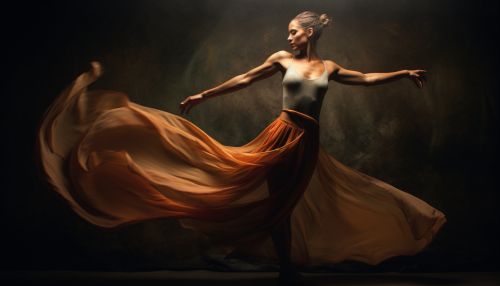Dance Improvisation
Introduction
Dance improvisation is the process of spontaneously creating movement. Development of improvised movement material is facilitated through a variety of creative explorations including body mapping through levels, shape and dynamics schema. Dance improvisation is not only about creating new movement but is also about improvising in relation to a certain theme or concept, such as emotions, time, space, or music. It is a free, 'unstructured' form of dance that disregards traditional choreography.


History
The history of dance improvisation dates back to the early 20th century with the emergence of modern dance pioneers such as Isadora Duncan, Ruth St. Denis, and Martha Graham. These dancers began to break away from the rigid techniques and structures of ballet, exploring more free and expressive movement styles. They often used improvisation as a tool for creating and developing their choreography.
Techniques
There are many different techniques and approaches to dance improvisation. Some of these include:
Contact Improvisation
Contact improvisation is a form of dance improvisation involving two or more dancers, where the point of contact with another dancer provides the starting point for a movement exploration. It involves sharing weight, rolling, falling, being upside down, following momentum and gravity, and responding to the actual physical situations that arise. The practice was developed by Steve Paxton in the 1970s and is often used in contemporary dance.
Action Theater
Action Theater is a form of dance improvisation developed by Ruth Zaporah. It involves a physical dialogue, using movement, voice, and speech, to explore the relationship between the body and the imagination. The practice is often used in physical theater and performance art.
Authentic Movement
Authentic Movement, developed by Mary Starks Whitehouse in the 1950s, is a form of dance improvisation that involves moving with eyes closed in response to inner impulses and sensations, in the presence of a witness. It is often used as a therapeutic tool, as well as in dance.
Benefits
Dance improvisation has a number of benefits. It can be a way of generating new movement ideas for choreography or performance, or a way of exploring and understanding one's own body and movement capabilities. It can also be a tool for personal growth and self-discovery, as it encourages self-expression and the exploration of personal feelings and emotions.
In Education
Dance improvisation is often used in dance education, from primary school through to professional training. It can be a way of introducing students to the basics of dance, such as spatial awareness, rhythm, and body coordination. It can also be a way of encouraging creativity and individual expression, and of teaching students how to respond to music and to each other's movements.
Conclusion
Dance improvisation is a vital and vibrant part of the dance world. It allows dancers to explore and express themselves in a free and unrestricted way, and can be a powerful tool for choreography and performance. Whether used in education, therapy, or professional dance, it continues to inspire and challenge dancers around the world.
